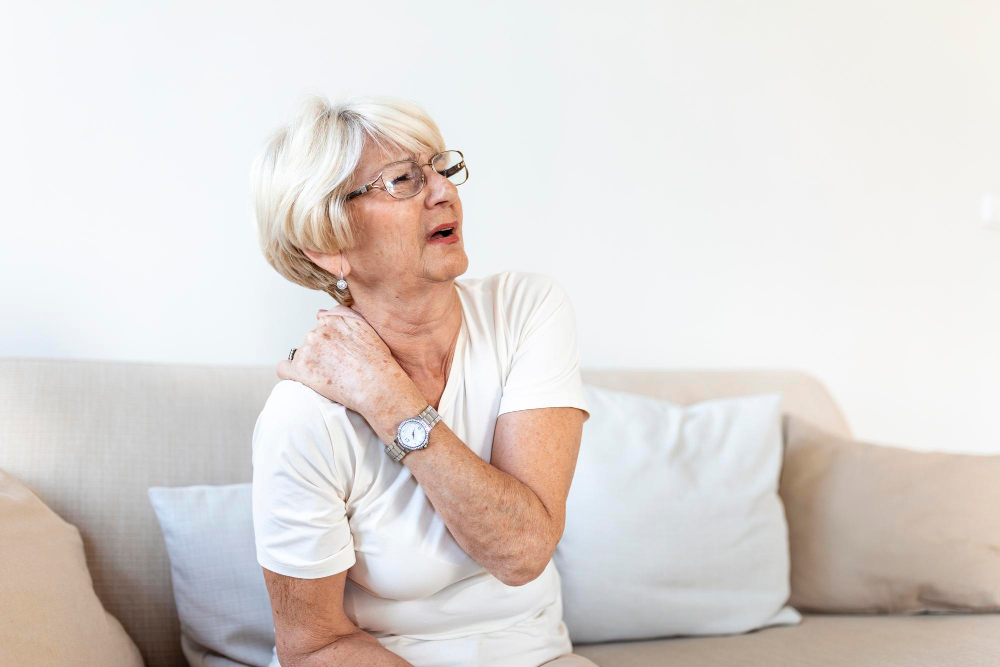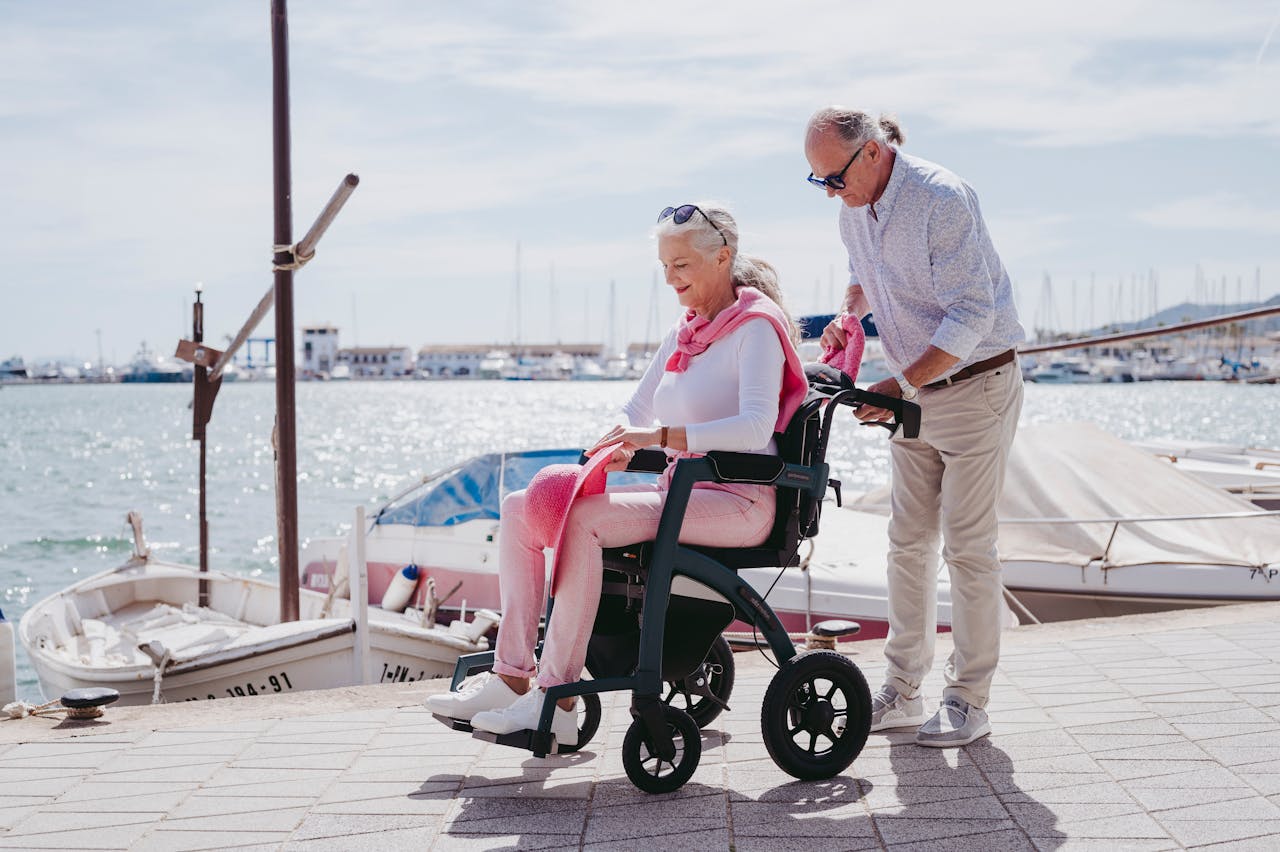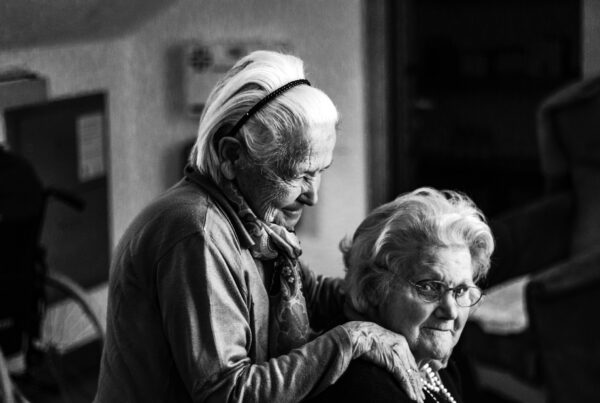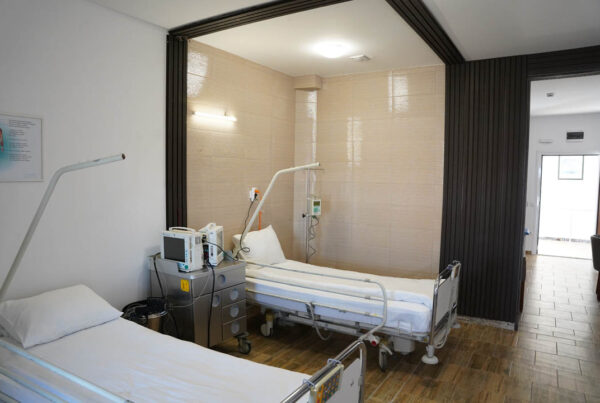Osteoporosis is a medical condition characterized by a decrease in bone density and quality, making them porous, brittle, and more susceptible to fractures. The literal meaning of the word “osteoporosis” is “porous bone.” This condition usually progresses without symptoms and is often not detected until a bone fracture occurs.
Bones are living tissue that is constantly renewed through the processes of building (anabolism) and breakdown (catabolism). In young people, this process is in balance, but as one ages, bone breakdown begins to outpace bone building, leading to a decrease in bone mass. When this happens to a significant extent, a person is considered to have osteoporosis.
Symptoms of osteoporosis
Osteoporosis, often described as a “silent disease,” usually does not show obvious symptoms in the early stages, making its early diagnosis difficult without specific tests. However, as the disease progresses, certain symptoms may become apparent and indicate a decrease in bone density and strength. A detailed understanding of these symptoms can help in early recognition and management of osteoporosis:
- Back pain – One of the most common symptoms of osteoporosis is back pain, which can occur as a result of fractures or collapse of spinal vertebrae. The pain can range from mild to very severe and is often localized in the lower back or middle of the spine. This pain typically worsens when standing or walking and may decrease when lying down.
- Decrease in height – Loss of height is another key indicator of osteoporosis. It can happen gradually, and many people don’t notice they’ve lost height until the change becomes significant. Height loss occurs due to compression fractures of the spinal vertebrae, which cause the spine to “collapse.”
- Stooped posture – In addition to height loss, spinal deformities caused by osteoporosis can lead to a stooped posture, known as a “dowager’s hump.” This stooped posture can lead to further pain and reduced mobility.
- Increased susceptibility to fractures – People with osteoporosis have an increased risk of fractures even with minor injuries that would not normally cause a fracture in healthy bones. Fractures most often occur in the hips, wrists, and spine. For example, a hip fracture is particularly serious and can lead to long-term disability and an increased risk of mortality.
- Dental problems – Tooth loss can be associated with osteoporosis, as the bones supporting the teeth can become less dense and strong.
- Weak and brittle nails – This may be a lesser-known symptom, but some people with osteoporosis notice that their nails have become more brittle than they were before.
Early detection and treatment of osteoporosis are crucial for minimizing the risk of fractures and other complications. Regular screening for osteoporosis, adequate intake of calcium and vitamin D, regular exercise, and avoiding risk factors such as smoking and excessive alcohol consumption are essential preventive measures. In case of symptoms or risk of osteoporosis, it is important to consult a doctor who can recommend additional steps, such as medications that can help preserve bone mass and strength.
Risk factors for osteoporosis include:
- Age – The risk of osteoporosis increases with age.
- Gender – Women are particularly susceptible to osteoporosis, especially after menopause due to a drop in estrogen levels, a hormone that helps maintain bone density.
- Genetics – A family history of osteoporosis can increase the risk.
- Diet – Insufficient intake of calcium and vitamin D can contribute to bone weakening.
- Physical inactivity – Regular exercise helps strengthen bones and muscles.
- Smoking and excessive alcohol consumption – These factors can negatively affect bone density.
- Certain medical conditions and medications – Some health problems and medications can increase the risk of osteoporosis.
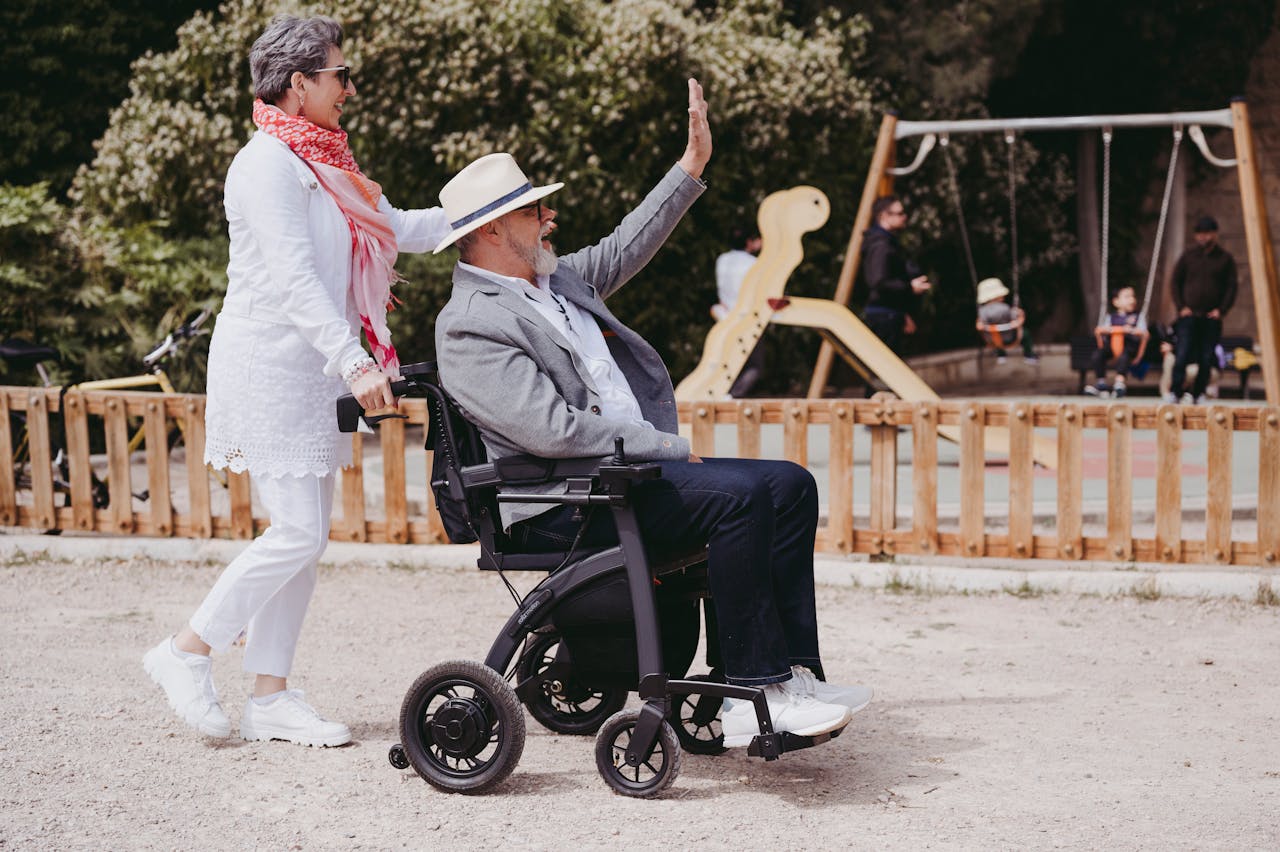
Osteoporosis Diet for osteoporosis prevention
Proper nutrition plays a key role in the prevention and treatment of osteoporosis. Nutrients that are particularly important for bone health include calcium, vitamin D, protein, magnesium, and vitamin K. Here’s how each of these nutrients contributes to maintaining and improving bone density, as well as which foods should be included in the diet.
Calcium
Calcium is a key mineral for building and maintaining strong bones. The recommended daily intake varies, but generally adults need between 1000 and 1200 mg of calcium per day, with increased needs for women over 50 and men over 70 years old.
Sources of calcium:
- Dairy products: milk, cheese, yogurt
- Green leafy vegetables: kale, broccoli, cabbage
- Fish with bones: sardines, salmon
- Fortified foods: orange juice, oatmeal, tofu
Vitamin D
Vitamin D helps the body absorb calcium, which is crucial for maintaining healthy bones. Sunlight is the main source of vitamin D, but it can also be obtained from food and supplements.
Sources of vitamin D:
- Fatty fish: tuna, salmon, mackerel
- Supplements, especially in regions with little sunlight
Protein
Protein is important for bone strength and recovery. However, a diet with excessive amounts of animal protein can, if not balanced with sufficient calcium intake, increase calcium loss from bones.
Sources of protein:
- Meat, fish, eggs
- Legumes: beans, lentils, tofu
- Dairy products
Magnesium
Magnesium helps in the conversion of vitamin D into its active form in the body, which further aids in calcium absorption.
Sources of magnesium:
- Green leafy vegetables
- Nuts and seeds: almonds, sunflower seeds, pumpkin seeds
- Whole grains: brown rice, quinoa
Vitamin K
Vitamin K promotes bone health by activating proteins that bind calcium in bones.
Sources of vitamin K:
- Green leafy vegetables: kale, spinach, broccoli
- Vegetable oils: soybean, canola
Additional dietary tips for osteoporosis
- Limit salt intake as it can increase calcium excretion from the body
- Moderate caffeine and alcohol consumption, as they can interfere with bone metabolism
- Maintain a healthy body weight – neither too little nor too much body mass is good for bones.
Integrating these dietary habits can help reduce the risk of osteoporosis, improve bone density, and decrease the chance of fractures.
Osteoporosis of the Vertebrae
Osteoporosis is a metabolic bone disease characterized by reduced bone density, which makes bones porous, brittle, and prone to fractures. It is most commonly diagnosed in menopausal women. Diagnosis of vertebral osteoporosis includes several key methods:
- Dual-Energy X-ray Absorptiometry (DEXA) scan – This is the most accurate method for measuring bone density. DEXA scanning uses low levels of X-rays to determine the density of minerals in bones, usually in the hips and spine. The test is quick and painless, lasting between 10-20 minutes.
- Quantitative computed tomography (QCT) – Used to measure bone density in the spine and can provide a three-dimensional image of the bone, allowing for more detailed analysis.
- Laboratory analyses – Blood and urine tests can help identify the cause of bone loss and rule out other diseases that may cause osteoporosis.
Precautions to prevent injuries in people with osteoporosis
To reduce the risk of injuries in people with vertebral osteoporosis, the following precautions are recommended:
Proper nutrition
- Calcium – An intake of 1000 mg per day is recommended for adults up to 50 years old, and 1200 mg for women over 50 and men over 70 years old. Good sources include dairy products, dark green vegetables, canned salmon and sardines, as well as soy products.
- Vitamin D – Helps calcium absorption. The recommended daily intake is 600 IU for people up to 70 years old, and 800 IU for those over 70 years old.
Physical Activity
- Strength and weight-bearing exercises – Activities such as walking, running, jumping, dancing, and weightlifting strengthen bones and muscles.
- Balance and flexibility exercises – Help reduce the risk of falls, which are a common cause of fractures in people with osteoporosis.
Safety measures at home
- Improve lighting – Ensure good lighting in all rooms to reduce the risk of tripping.
- Eliminate obstacles – Remove carpets and cables that can cause falls.
- Handrails and grab bars – Install handrails in bathrooms and next to stairs.
Regular check-ups
Regular monitoring of bone density, especially for menopausal women and older adults, allows for early detection and timely intervention.
Implementing these measures can significantly reduce the risk of fractures and improve the quality of life for people with vertebral osteoporosis.
If you need care for a person with osteoporosis, we have permanent or temporary accommodation within our home, we also have rehabilitation with top-of-the-line equipment. See the gallery of our senior living home Alexander Ville and call us.


